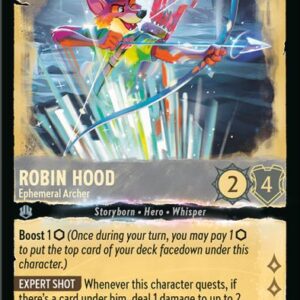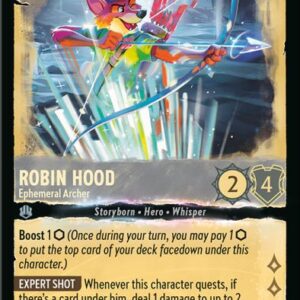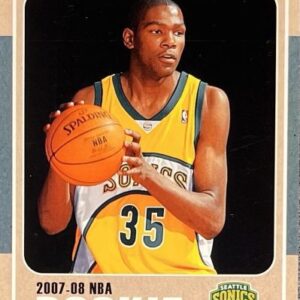In an alluring twist for wrestling card aficionados, Topps has unveiled its latest expansion to the much-celebrated Buyback Program, now including the 2025 Topps Chrome WWE cards. This initiative is set to excite collectors who delight in all things WWE, ensuring that even those cards which often find themselves saddled with the proverbial dust are now polished to prominence. With a nod to tradition and a dash of innovation, Topps’ decision to integrate WWE cards into the program is poised to be a slam dunk—or perhaps more appropriately, a body slam.
In recent years, the Topps Chrome cards for Baseball and UFC have basked in the Buyback Program’s spotlight, successfully heightening the allure of trading cards that otherwise might have wrestled for attention—or worse, languished in forgotten obscurity. Recognizing this success, Topps has thrown its figurative hat into the ring with WWE—a decision that is bound to bring cheers from card shops and avenues worldwide, where these cards can now be exchanged for store credit.
The timing of this announcement is far from incidental; it skillfully capitalizes on the fever pitch of excitement surrounding WrestleMania 41’s arrival in Las Vegas. Slated for April 19th and 20th, this wrestling spectacle will feature intense showdowns with stars who appreciate the limelight. And Topps has astutely positioned their own stars—pieces of cardboard they may be—embracing the excitement and tangibility of fandom that these card collectibles represent.
Specifically focusing on the WWE World Heavyweight Championship and WWE Women’s Championship matches, Topps is zeroing in on four superstars who are sure to leave an indelible mark not just on the ring, but on collectors’ portfolios. Within this gloriously orchestrated spectacle, Jey Uso will square off with Gunther, while Tiffany Stratton faces off against Charlotte Flair in a battle of titans and titans-in-the-making. Whoever claims victory in these matches will not only earn bragging rights but will also become the program’s esteemed Buyback athletes.
Turning a spotlight on the cards, it’s fascinating to note the meticulous selection of eligible items that Topps has laid out for this program. Only the 2025 Topps Chrome WWE cards from most box varieties qualify, with the high-end Sapphire edition sitting this one out, perhaps akin to missing a match due to a “timely” injury. This is not a blanket agreement but a focused and strategic maneuver, with base set cards being the primary target—specifically, card numbers 106 (Jey Uso), 2 (Gunther), 123 (Charlotte Flair), and 182 (Tiffany Stratton), all mirroring their real-life counterparts’ gladiatorial pursuits.
The program’s structure is as delineated as a well-produced wrestling plotline, with card variations determining credit value. Base or Image Variation cards secure a respectable $20, a base hit in baseball terms—or perhaps a suplex in wrestling terms. Those moving into the Non-Numbered Refractor tier see their value shimmer at $40. Up the ante, and Numbered Refractors greater than 100 draw in a cool $100, a sum that might just make one’s cards feel championship-worthy. Yet, it’s the elite, the crème de la crème—Numbered Refractors under 100—that command the top dollar, earning $200 per card, an amount that may even inspire chants from spectators holding these coveted marvels.
Encouragingly, the program is not just an homage to the fans; it is a savvy acknowledgment of the blend of emotional and investment value inherent in wrestling memorabilia. With each traded card comes a story, a fond recollection of a match or moment that resonated, forever framing the card in the glowing hues of nostalgia and investment.
For collectors and wrestling connoisseurs, this buyback initiative is more than a mere transaction; it is an endorsement of their passion and an elevation of their collection’s value. The spirit of competition echoes off the wrestling mat and into the world of card collecting, inviting fans to engage with their cherished hobby in a fresh and rewarding way.
As Topps leverages this expansion, they are not merely cashing in on wrestling’s populist allure. They are enriching a dialogue with fans, acknowledging the complex interplay between collecting and community. The cardboard heroes that emerge from this program embody the spectacle and drama that wrestling provides, a testament to Topps’ innovative endeavors.
In the world of wrestling, one never quite knows what will happen next. Similarly, in the unpredictable arena of collectibles, Topps has made a triumphant entry. With the expanded Buyback Program, they’ve given fans yet another reason to treasure their finds—and perhaps a few more to fish them out from long-forgotten closets. Congratulations, collectors; your cards are now officially champions! The bell rings, the fans cheer, and the program is sure to be as much a blockbuster as the bouts themselves.





